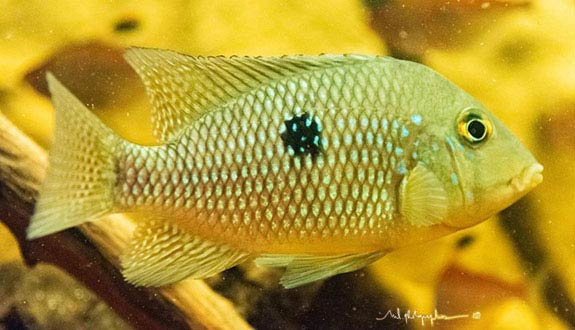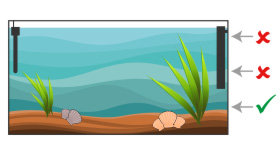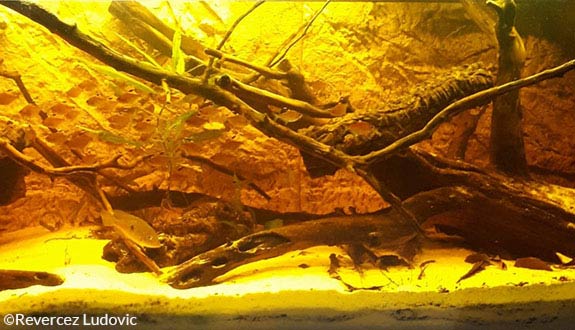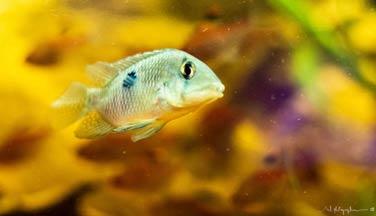

Geophagus
(Geophagus iporangensis)

A big thank you to Revercez Ludovic!
Alternative species (click on the thumbnail to see the card)
Names
Scientific name
Geophagus iporangensis
Common name
Geophagus
Origin

Origin: Brazil (Rio Ribeira)
Biotope: Amazonian
Dimorphism

The female remains significantly smaller than the male and has less flaked fins. Some male develop a lump on the forehead.
Group

Cichlidae
Volume

360 L / 80 imp gal / 95 US gal
Parameters

T°: 24 à 30°C or 75 to 86°F
pH: 5.5 to 7
Hardness: 10°dGH
Difficulty

Easy
Size

Female: 7cm (3")-Male: 11 to 15cm (4 to 6")
Longevity

/
Living zone

Depth
Individuals

5 to 6
Food
How to feed the Geophagus?
Food
How to feed the Geophagus?
This species is omnivorous with a detrivorous tendency. Like other species of Geophagus, they feed mainly while filtering the sand. It is important to diversify food to keep them healthy.
Behavior
What kind of behavior does the Geophagus have?
Behavior
What kind of behavior does the Geophagus have?
Peaceful fish with all species except those whose size is less than 4 cm or 1.5 inch, because they can be considered as prey. It spends most of the time filtering the sand.

It is not aggressive except during the breeding season and will bring life to the aquarium because it stays active all day long.
Cohabitation
Who can live with the Geophagus?
Cohabitation
Who can live with the Geophagus?
This species coexists perfectly with all species accepting the same water parameters as long as they measure at least 4 cm or 1.5 inch.
Breeding
How to breed the Geophagus?
Breeding
How to breed the Geophagus?
It is a species that lays on a flat support (for example, a root or a rock). The male will clean the support before the female lays the eggs, which will be followed closely by the male who will fertilize the eggs. Afterwards, the female will be alone to protect her eggs (it is very efficient, the female I posses at home managed to maintain them until hatching) and will ventilate them with her fins. Once the eggs hatch (72 hours after egg laying), the female will hide them until free swimming. With regard to breeding parameters, spawning was obtained at a temperature of 29°C or 84°F, a conductivity of 135 μS / cm and a pH of 5.63.
Its aquarium
Which aquarium for the Geophagus?
Its aquarium
Which aquarium for the Geophagus?
This Geophagus is not difficult as for its habitat but its burrowing activity forces to compose the ground of a thick layer of fine sand. It does not consume plants but it is better not to keep it in a planted aquarium because it will uproot them by digging.

If ever plants were to decorate, a mosquito net can be installed between the nutritive soil and the fine sand so that the roots catch on it and the nutritive soil does not rise to the surface. The leaves of catappa can be an excellent enrichment of the environment because in addition to bringing a natural side to the aquarium, the geophages will consume them if these were «pre-staked» by a locarid.
Good To know
Find all additional information!
Good To know
Find all additional information!
This is a very robust species with respect to parameters. However, the filtration must be effective because the impurities, usually remaining on the ground, will be lifted constantly which can cause clogging in the filter media if they are not checked regularly. It is important to be equipped with fine porosity foams to prevent fine particles from reaching the pumps which could cause damage. Regarding the flow rate of filtration, it should ideally be low (maximum 3x the volume of the hour) so as not to create additional turbulence that would make the water cloudy.
Yours photos!
Comments
Sort by:
Please login to post comments


